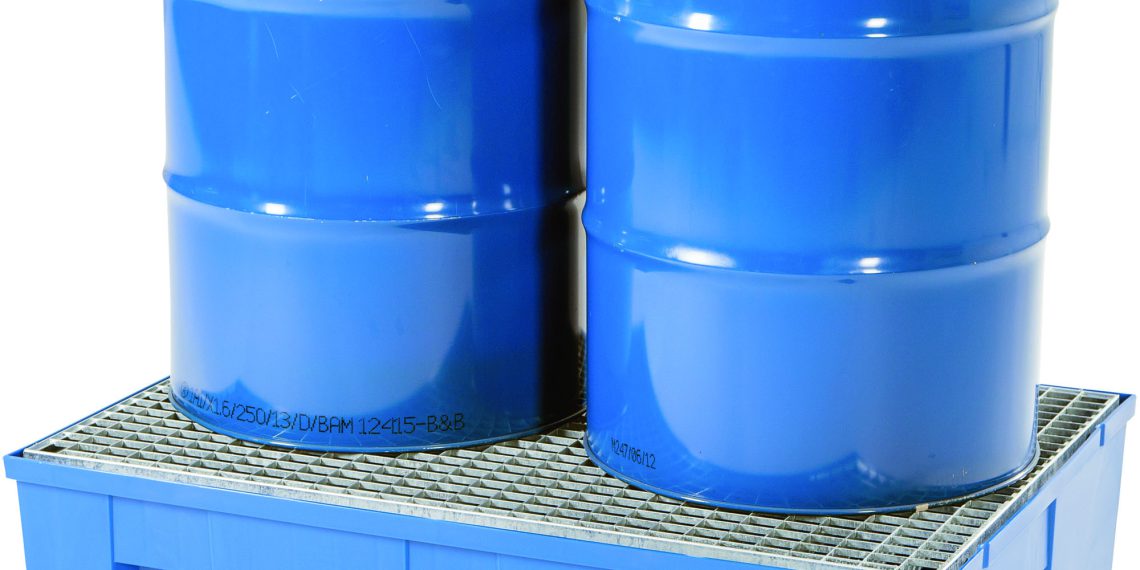The Hessian manufacturer of safety cabinets asecos offers optimum protection for people and the environment with its tested collection tray systems made of plastic or steel: they are certified and tested. The Water Resources Act (WHG) stipulates in §62 that containers in which liquids hazardous to water are stored must be protected against leakage by suitable drip pans. The approved drip pans provide the appropriate retention volume here. They prevent the hazardous chemicals from leaking into the working or storage area, allowing the hazardous substances to enter the wastewater unhindered via the drain, for example.
Depending on the requirements, water-polluting liquids are stored in tub systems made of steel or plastic. Plastic drip pans (mostly made of polyethylene PE) are used for the storage of aggressive chemicals such as acids or alkalis due to their high material resistance. The PE collection trays from asecos have a general building authority approval, which is granted by the German Institute for Building Technology (DIBt) on application. When installed outdoors, the collection trays must be protected against precipitation.
Flammable and/or water-polluting liquids, such as mineral oils or paints, must be stored in catch basins made of (galvanized) steel, which are manufactured and certified in accordance with the so-called Steel Basin Directive (StawaR). This specifies that steel sumps must be liquid-tight, corrosion-protected and resistant to the stored substance. Steel catch basins are used for the storage of flammable liquids because they remain dimensionally stable even in the event of fire.
Requirements for containment volume and storage
According to the Water Resources Act, a catch basin must be able to hold at least 10% of the total quantity stored, or at least the volume of the largest container stored. If storage is permitted in water protection areas, it must be possible to retain the entire stored quantity (100%).
When storing several liquids in one containment sump, any existing prohibitions on storage together must be observed in order to prevent a reaction. Therefore, not only the resistance of the catch basin to the substances, but also the risk of an exothermic reaction destroying the statics of the basin must be checked.

















